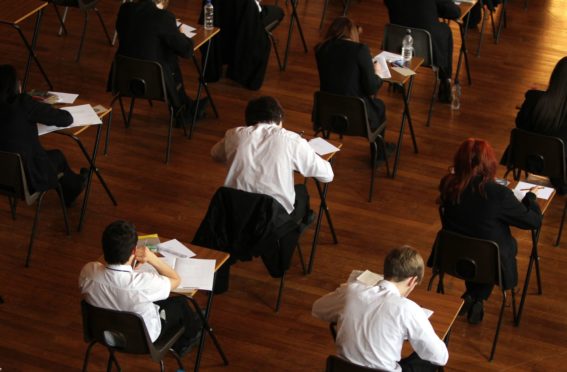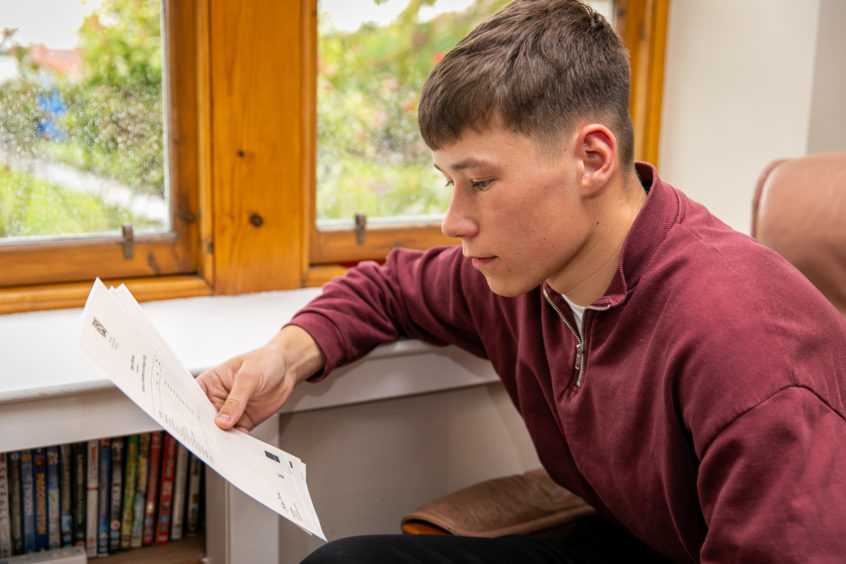The grading of this year’s exams has been labelled a “travesty” by concerned teachers following yesterday’s results.
The Scottish Qualification Authority (SQA) has come under fire for its system of grading this year’s exams after it emerged more than 133,000 results had been adjusted from teachers’ estimates – the majority of them downwards.
Figures show that there was a 15% gap between the actual and estimated pass rate for children in the most deprived areas, compared to just 7% for those in the least deprived areas.
Now teachers across the country have taken to social media to express their concerns over the apparent disparity in grading between pupils in wealthy and deprived areas.
“This is the travesty”
Graeme Wallace, who is deputy head at Forfar Academy, posted a link on Twitter to his blog post in which he expressed his “alarm” over the “travesty” of this year’s grades.
He said: “We might as well have not bothered.
The downgrading of so many estimates was, simply, unfair. My take on this year's process: https://t.co/1E2b5oL8us
#SQAresults #sqaresultsday #Scotland #education #ScottishEducatorsConnect— Graeme Wallace (@graemepwallace) August 4, 2020
“Teacher estimates have been adjusted – the overwhelming majority in a downward direction – to suit the average attainment profiles of schools and subjects over the last three years.
“This is the travesty. No matter how hard a pupil worked, no matter the strength of evidence available, no matter how diligently your teacher considered it or how robust the moderation process in your school: if the kids a few years older than you didn’t do well, then you didn’t either.”
Professional judgement
In his post Mr Wallace also raised concerns over the percentage of teacher estimates that had been moderated by the SQA and the apparent lack of trust the body had in the predicated grades that were submitted.
He said: “That 25% of professional judgements were ignored should be a cause for alarm. I cannot imagine this ever being the case with any other profession.
“What would happen if a publicly funded national body issued a press release saying that 25% of doctors in Scotland routinely get it wrong?
“Can we imagine a quarter of court convictions being overturned because a statistical model suggested they should be?
“For me, the worst thing is that there appears to have been no consideration of the impact of this approach on individual pupils. It is simply not the case that all of these teachers got it wrong.”
Attainment gap
Speaking at yesterday’s daily briefing, the First Minister defended the SQA’s moderation of the results, claiming it was necessary to ensure their credibility.
Nicola Sturgeon also highlighted that despite the controversy, this year’s results had seen an increase in the number of young people from deprived areas passing their Highers.
She said: “Poorer young people don’t do as well as more affluent young people, and that is something we are working very hard to rectify.
“This system of moderation is necessary, and what it has resulted in is around 70% of young people in our most deprived areas have passed their Highers – which is an increase on around 65% on last year.”
But Mr Wallace was dismissive of the apparent closing of the attainment gap and instead claimed the results were “self-serving”.
He added: “These engineered figures can be used to present an increase in the pass rate that is of just the right order to be media-friendly.
“They can be used to demonstrate that the attainment gap is closing.
“Ultimately, they can be used at future Holyrood committees to demonstrate that we really do need to give kids three years of stressful exams in a row and that our 19th century certification process actually is in fact the perfect culmination to our 21st century curriculum. ”
Gaining support
His post has garnered significant support from those who work in education across Scotland.
In sharing the post on Twitter, one woman said: “Hearing so many stories from friends whose young people did well in prelims but downgraded in Higher exams which they were unable to sit.
“Covid could last for years therefore this needs sorted out this year.”
That 25% of professional judgments were ignored should be a cause for alarm. I cannot imagine this ever being the case with any other profession.
Graeme Wallace, teacher
Another user, a former pupil of Mr. Wallace, added: “Really sums up all that was wrong with today’s SQA results.
“I feel so sorry for those who didn’t get the results they know, and their teachers knew, they deserved.”
A spokesman for the SQA said: “At the end of May, we received more than 500,000 estimated grades from nearly 500 schools and colleges across Scotland, covering 129 courses.
“We simply couldn’t have a dialogue with schools and colleges across the country, in the short space of time available, and in a manner which would have been fair and consistent for all learners.
“Our free appeals service will provide an opportunity for evidence to be considered.”











